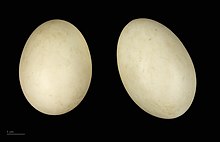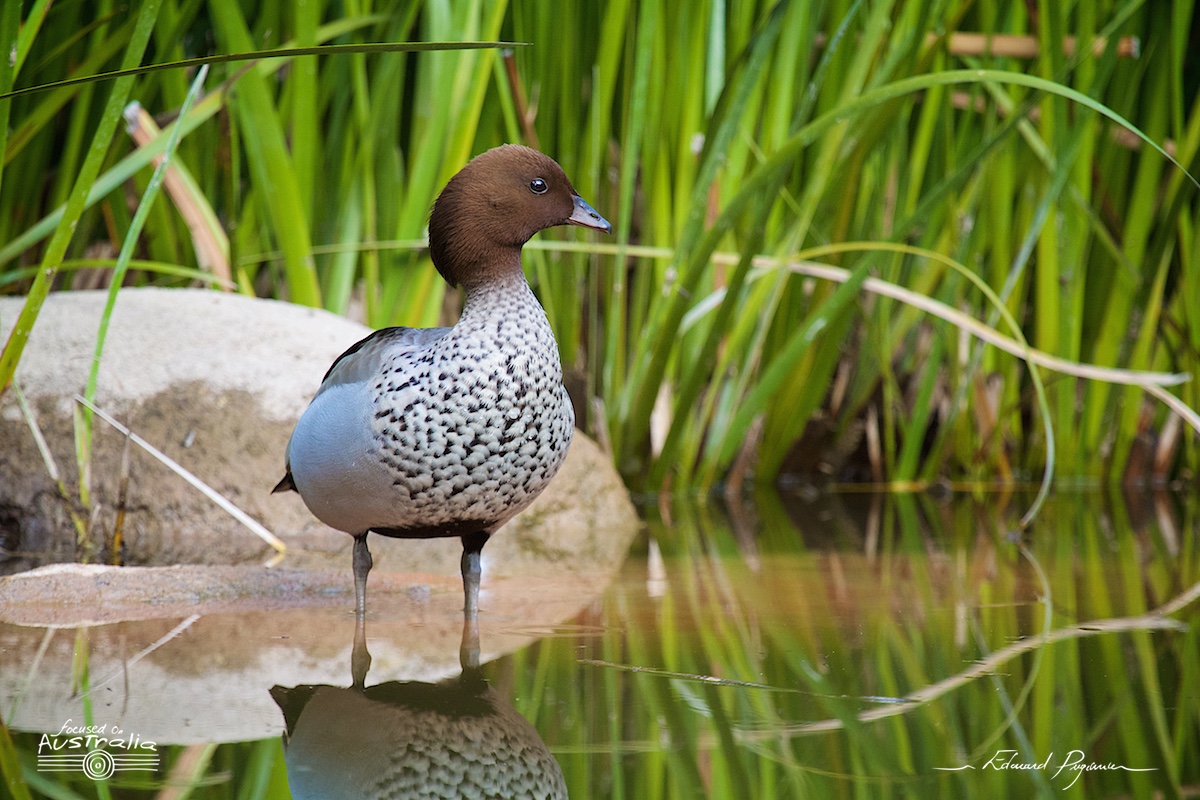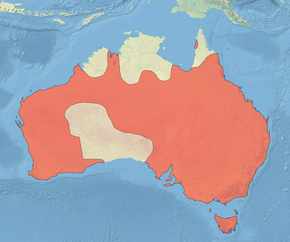Wikipédia
Chenonetta jubata
Cet article est une ébauche concernant les oiseaux.
Vous pouvez partager vos connaissances en l’améliorant (comment ?) selon les recommandations du projet ornithologie.
| Règne | Animalia |
|---|---|
| Embranchement | Chordata |
| Classe | Aves |
| Ordre | Anseriformes |
| Famille | Anatidae |
| Genre | Chenonetta |
Répartition géographique
Le Canard à crinière (Chenonetta jubata), chénonette à crinière ou bernache à crinière, est une espèce d'oiseaux de la famille des Anatidae.
Description
Il mesure entre 41 et 51 cm; ce qui fait d'elle la plus petite des bernaches. Il présente un net dimorphisme sexuel puisque le mâle se caractérise par sa tête brune et son plumage gris tandis que la femelle (et le jeune) est brune avec des marques blanches.
Cet oiseau se rencontre près des lacs et des marais.
Alimentation
La bernache à crinière est une brouteuse tout comme les oies. Elle se nourrit essentiellement de plantes, de roseaux et de végétaux aquatiques. Il lui arrive cependant d'être insectivore si l'occasion s'en présente.
Reproduction
Le canard à crinière se reproduit généralement dans la période estivale de juillet à août mais, la ponte peut s'effectuer durant l'ensemble de l'année selon les conditions climatiques. C'est une espèce monogame, le mâle et la femelle participeront tous deux à la recherche du lieu idéal pour pondre (en général une cavité d'arbre, un terrier ou dans un nichoir à chicane en élevage). La cane pondra généralement entre 6 et 12 œufs qu'elle couvera ensuite durant une période de 28 à 34 jours, pendant que le mâle quant à lui montera la garde devant le nid afin que l'on ne vienne pas déranger sa partenaire.
Galerie
-
mâle
-
femelle

Voir aussi
Articles connexes
.mw-parser-output .autres-projets>.titre{text-align:center;margin:0.2em 0}.mw-parser-output .autres-projets>ul{margin:0;padding:0}.mw-parser-output .autres-projets>ul>li{list-style:none;margin:0.2em 0;text-indent:0;padding-left:24px;min-height:20px;text-align:left;display:block}.mw-parser-output .autres-projets>ul>li>a{font-style:italic}@media(max-width:720px){.mw-parser-output .autres-projets{float:none}}Sur les autres projets Wikimedia :
- Canard à crinière, sur Wikimedia Commons
- Canard à crinière, sur Wikispecies
Références taxonomiques
- (fr) Référence Oiseaux.net : Chenonetta jubata (+ répartition)
- (en) Référence Congrès ornithologique international : Chenonetta jubata dans l'ordre Anseriformes (consulté le 17 mai 2015)
- (fr + en) Référence Avibase : Chenonetta jubata (+ répartition) (consulté le 30 juin 2015)
- (en) Référence Zoonomen Nomenclature Resource (Alan P. Peterson) : Chenonetta jubata dans Anseriformes
- (en) Référence Tree of Life Web Project : Chenonetta jubata
- (fr + en) Référence ITIS : Chenonetta jubata (Latham, 1802)
- (en) Référence Animal Diversity Web : Chenonetta jubata
- (en) Référence NCBI : Chenonetta jubata (taxons inclus)
- (en) Référence UICN : espèce Chenonetta jubata (Latham, 1802) (consulté le 30 juin 2015)







